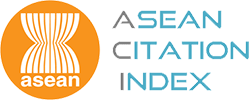Nepal: From Constitutional Monarchy to a Republican State (1990-2008)
Keywords:
Nepal, Constitution, Monarchy, Republic, PoliticsAbstract
The peoples’ movement of 1990 was a great landmark in the history of modern Nepal for it ended the three-decades of the old dictatorial rule of the king and established a parliamentary system with the king as a nominal head of state. But unfortunately, the country could not form a good government because of inter and intra-party conflicts. To add fuel to the flame, the rise of the Maoist movement and the royal massacre put the country in a state of confusion and uncertainty. The new king tried to revive dictatorial rule once again by suppressing the political parties and the Maoists. But his attempts failed, and the 19-day movement in 2006 re-established peoples’ sovereignty in the country. The first meeting of the elected constituent assembly in 2008 formally ended monarchy and declared Nepal a republic. But the first constituent assembly ended its four–year term without drafting a constitution. The second constituent assembly has pledged to promulgate a democratic constitution by January 2015, but all indications are that that the country is unlikely to get a constitution in time.
Additional Files
Published
09-01-2020
How to Cite
Manandhar, T. R. (2020). Nepal: From Constitutional Monarchy to a Republican State (1990-2008). Journal of International Studies, 10, 95–109. Retrieved from https://e-journal.uum.edu.my/index.php/jis/article/view/7951
Issue
Section
Articles






















